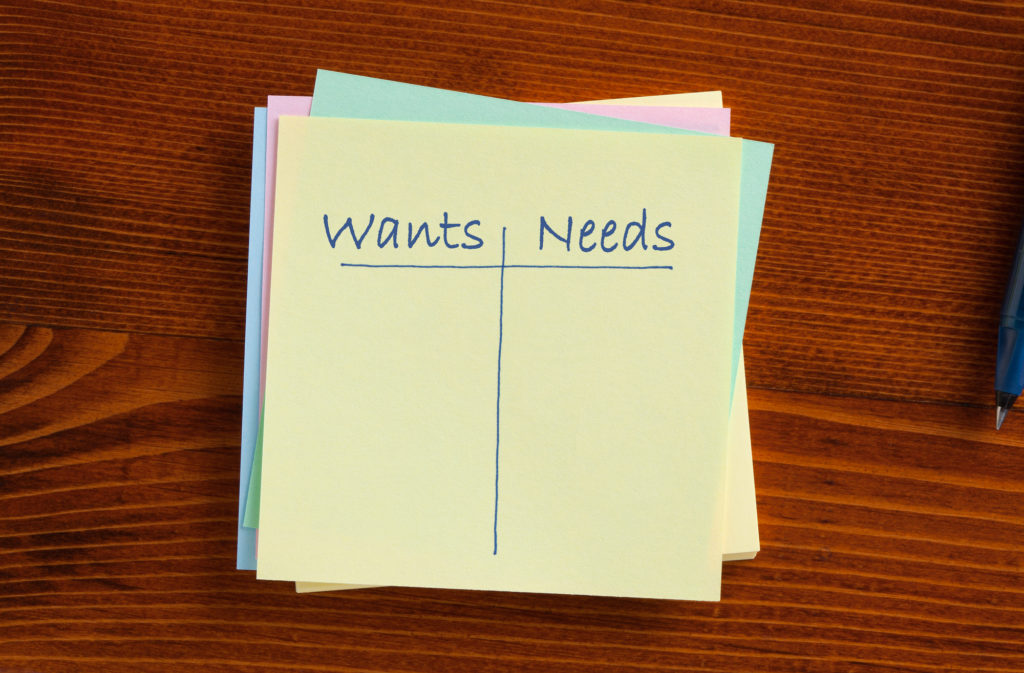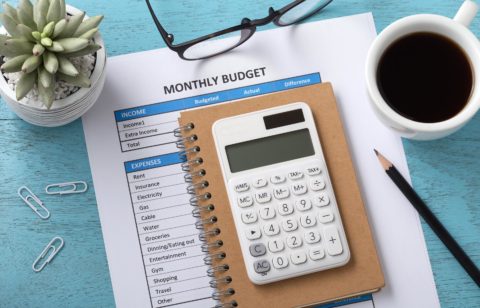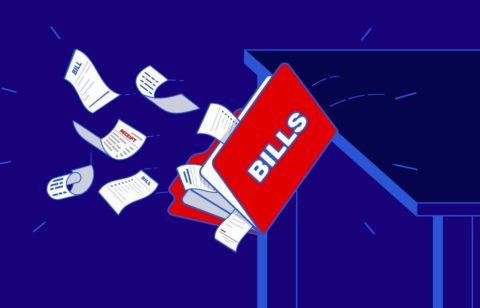Frugal living starts with your definition of needs and wants. Your needs are essential expenses you must buy to maintain your quality of life, such as food, shelter, and clothing. Your wants are non-essential items you would like to have but could live without, such as a renovation or a vacation out of the country.
It is necessary to distinguish between the two because you need to ensure that your budget can cover your essential expenses first. If you have money left over after covering your needs, you can consider adding some of your wants into the mix.
This tactic is especially helpful if you are struggling to pay off debt. Although there are more strategic options that can help you tackle this situation, such as debt consolidation, it is a good idea to start with your budget.
People Also Read
Understand what “fixed” and “variable” expenses are
Knowing the difference between fixed and variable expenses will impact how you allocate the funds. Your fixed expenses are those that remain the same every month, such as:
- Food costs
- Utility bills
- Car or student loan payments
- Gym membership subscriptions
- Rent or mortgage payments
Your variable expenses can fluctuate from month to month, like:
- Dining out
- Entertainment
- Clothing
- Travel expenses
If you are unsure how to classify certain expenses, ask yourself if the amount you spend on that item is generally the same each month. If it fluctuates, it probably falls into the variable expense category. Now that you know, make a list of your fixed and variable expenses. This will provide a better idea of where your money is going and what costs you can potentially cut back on.
How to budget for your needs
Once you have a clear picture of your expenses, it is time to start budgeting for the essentials. If your monthly expenses are tight, you may need to make some adjustments. By revising your budget to get the most out of it, you can ensure that all of your essential expenses are covered before choosing those “wants” you don’t care to live without.
Follow these tips for a good way to get started:
Assess your income
The first step is to examine your income and expenses closely. Make sure that you are taking into account all of your money sources, such as your salary, investments, or side hustles.
You will also need to differentiate between your net pay and your yearly gross income. Your gross income is how much money you make before taxes, social security, and health insurance are factored in. Net pay is the amount you take home after these payments are deducted.
List your needs
Once you know how much money you have to work with, it is time to start listing your needs. If you are not sure what should make the list, consider the following:
- Food costs
- Childcare costs
- Housing costs (mortgage or rent payment, property taxes, insurance)
- Utilities (electricity, water, trash, internet)
- Transportation expenses (car payment, gas, public transportation costs)
- Debt payments (student loans, credit card debt, personal loans)
- Medical expenses (health insurance, prescriptions, co-pays)
Determining whether a need is really a must-have can be difficult, but there are a few key questions you can ask yourself to guide the decision.
- Is this something that I can’t live without?
- Will this have a major impact on my quality of life?
- Is there a less expensive way to meet this need?
In addition, you should also take into account an emergency fund for unexpected expenses. Alarmingly, 56% of Americans cannot cover an unexpected $1,000 bill. In an emergency, they would have to resort to extreme measures like taking on more debt or selling personal belongings. However, if you have an emergency fund under your belt, you will be more prepared for anything.
Likewise, saving for retirement is an essential need that is often overlooked. If you don’t have a retirement fund, you might want to start contributing to one as soon as possible. The sooner you start saving, the more your money will build up over time.
List the costs
Now that you have made your list and checked it twice, it is time to assign a dollar amount to each item. Your bank statements from the past few months will provide a good idea of how much you typically spend in each category.
Keep in mind that some costs — even fixed costs — may fluctuate. For example, you may spend more on groceries in the summer when produce is in season than in the winter. Likewise, your utility bills may be higher in the winter when you are using heat than in the summer when you are using air conditioning.
If you are unsure of how much to budget for a particular item, it is always better to err on the side of more. That way, you will have enough money to cover your costs. If you overestimate and have money left over, you get to choose where it should go.
Move expenses around
If you find that your needs cost more than your budget will allow, you may need to start moving expenses around. For example, you can save money on your housing costs by downsizing to a smaller home or apartment. Or forgo that dream vacation for a staycation.
On the other hand, there are some needs you can’t skimp on. For example, you probably can’t reduce your healthcare costs. And since your health should always come first, that is almost never a good place to cut costs.
Talk to a financial advisor
If you are having trouble wrapping your head around your budget, it may be time to talk to a financial advisor. They can help you create a list that covers the essentials and puts you on the path to financial success.
A good financial advisor will also help you set goals and create a plan to reach them. So whether you are looking to save for a down payment on a home or you want to retire by a certain age, speaking with a financial advisor is a smart way to make it happen.
How to budget for your wants
While your wants may not be as important as your needs, they are still significant to you and your overall well-being. Now that you have a dollar figure you can’t touch, you can allocate any available money to those items you would like to have.
However, sometimes budgeting for the things you want can be difficult. If you need help, there are plenty of ways to budget for people who hate budgeting. From apps to envelope systems, you are bound to find the option that is right for you.
Prioritize what you want most
Start by identifying which items on your wishlist are most important to you. This will help guide how you spend your money and ensure you are allocating funds toward those things you would miss the most.
For example, if you are looking for budget-friendly date night ideas, you may want to put more money towards leisure and entertainment.
Think long-term
When you are making your budget, it is essential to consider the future. Even if you can’t afford something right now, that doesn’t mean you won’t be able to afford it down the road.
For example, if you are hoping to take a big vacation next year, start setting money aside now so that you will have enough when the time comes.
Consider whether it is really worth it
Before making any big purchases, ask yourself if it is worth it. That new car may be nice, but is it worth going into debt for? Again, it is okay to want things but you should only buy them if they are truly worth the cost.
Consider your mental health
Your mental health is just as important as your physical health. It is important to consider both when creating your budget.
Studies have shown that certain types of spending can affect your mood and mental health. In a Science Daily study, it was found that people who spend money on experiences are happier than those who spend money on material things. So, consider allocating a portion of your budget towards tickets to a show or a weekend getaway to improve your mental health.
At the end of the day, it is up to you to decide what is most important and how it can fit within your budget.







